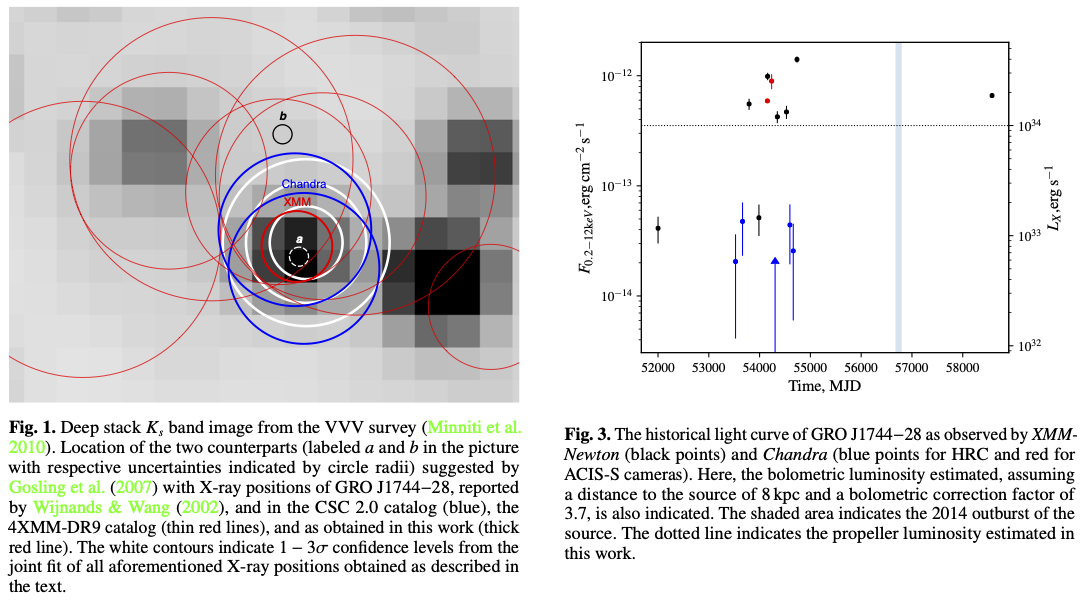Observations of GRO J1744-28 in quiescence with XMM-Newton
Following long-awaited observation of ultra-peculiar source, the "bursting pulsar", GRO J1744-28 with XMM-Newton in quiescence, we finally published a work reporting on the results.

We detected the source at a luminosity level of $\sim10^{34}$erg/s with an X-ray spectrum that is consistent with the power law, blackbody, or accretion-heated neutron star atmosphere models. The improved X-ray localization of the source allowed us to confirm the previously identified candidate optical counterpart as a relatively massive G/K~III star at 8 kpc close to the Galactic center, implying an almost face-on view of the binary system. Although we could only find a nonrestricting upper limit on the pulsed fraction of ∼20%, the observed hard X-ray spectrum and strong long-term variability of the X-ray flux suggest that the source is also still accreting when not in outburst. The luminosity corresponding to the onset of centrifugal inhibition of accretion is thus estimated to be at least two orders of magnitude lower than previously reported. We discuss this finding in the context of previous studies and argue that the results indicate a multipole structure in the magnetic field with the first dipole term of ∼1010 G, which is much lower than previously assumed.